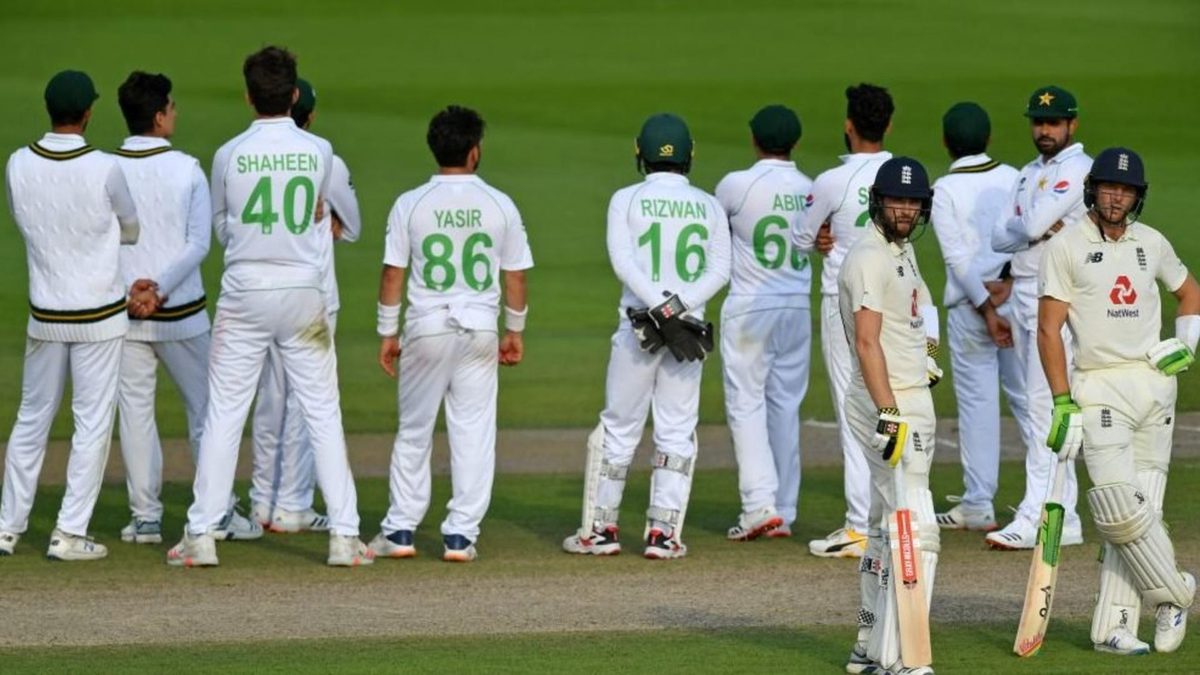
A series that was frequently disrupted by bad weather ended up going 1-0 England’s way, but the final result did not quite reveal the crucial moments Pakistan missed out on, letting England come from behind and take advantage. Looking back, Pakistan might wonder if the series would have panned out in their favour, had they done certain things differently.
#1 Bowl Yasir ahead of Shadab at Manchester
A dismayed Azhar Ali, in the post-series presentation, admitted his side lost “the one session in the series that really mattered” – letting England off the hook after pinning them at 117-5 in a chase of 277. At tea on day four, Jos Buttler and Chris Woakes had pushed England to 167-5, and were expected to have to tackle Yasir Shah’s sharp turners in the final session. However, it was Shadab Khan, who had bowled just a solitary over by then, who ended up bowling ahead of Yasir.
It seemed to create an opening for the duo, who went about collecting runs with ease, the Pakistan skipper doing little to drag the advantage back. By the time Yasir was brought into the attack, both Buttler and Woakes had crossed their fifties, and England were cruising to a win. Yasir made the ball turn and bounce, causing a dramatic late twist and picking up three wickets towards the end, but it turned out to be too late for Pakistan.
#2 Apply the killer instinct
Compared to England’s line-up, which ran deep even after Ben Stokes’ sudden exit from the series, Pakistan’s lower-order fragility stuck out as a cause of concern time and again. In the first Test, they preferred the leg-spinning all-rounder Shadab Khan at No.7, whose 76-ball 45 provided crucial resistance alongside Babar Azam, when Pakistan had slipped from 139-2 to 176-5. However, after bowling only 11.2 overs in all in the first Test, he was replaced by Fawad Alam for the next two games.
The move did little to address their batting issues, and they appeared a bowler short too, especially with Pakistan’s frontline bowlers blowing hot and cold. “Balance is created in the side by medium-pace all-rounders,” Azhar Ali said after the third Test, hinting that, perhaps, Fahim Ashraf or Sohail Khan could have been a better fit, or should have persisted with Shadab to keep the balance intact.
Really, as well as the Woakes-Buttler stand, the cause of the first Test defeat was Pakistan’s third-innings collapse, subsiding for 169 despite six of the top eight making it to double figures. Had one of them gone on past 50, the game might well have beyond England, and that lack of killer instinct is what cost Pakistan.
Was Fawad Alam unlucky to be dismissed?https://t.co/UiyTR0hwIs
— Wisden (@WisdenCricket) August 23, 2020
#3 Defensive field placements
Having conceded a game that could have been theirs, Pakistan didn’t seem to learn from their mistake, carrying it into the third Test. No.3 Zak Crawley walked in as early as the fifth over, and was tested on the off-stump by the quicks, leaving a couple of deliveries that passed perilously close to the stumps. The pressure tailed off when Azhar Ali employed Yasir Shah and put a defensive fielder at point, a move that was later criticised by Ramiz Raja.
With Crawley playing the hard, new ball with the turn and guiding it around for easy singles, Raja questioned whether the field was set for “poor bowling”. “From a batting point of view, it’s very easy for a batsman if he can score a run off every ball,” Raja said. “He’ll be set in 15 minutes, and can then start hitting boundaries. So I don’t understand this strategy – Yasir Shah is bowling his first ball, and he has a deep point?”
Crawley went on to diffuse the Yasir threat, piling on the runs with ease, even as Azhar went back into the defensive shell of the first Test. 267 runs came off Crawley’s bat, and after that, Pakistan did not really have a way back into the game, or the series.








